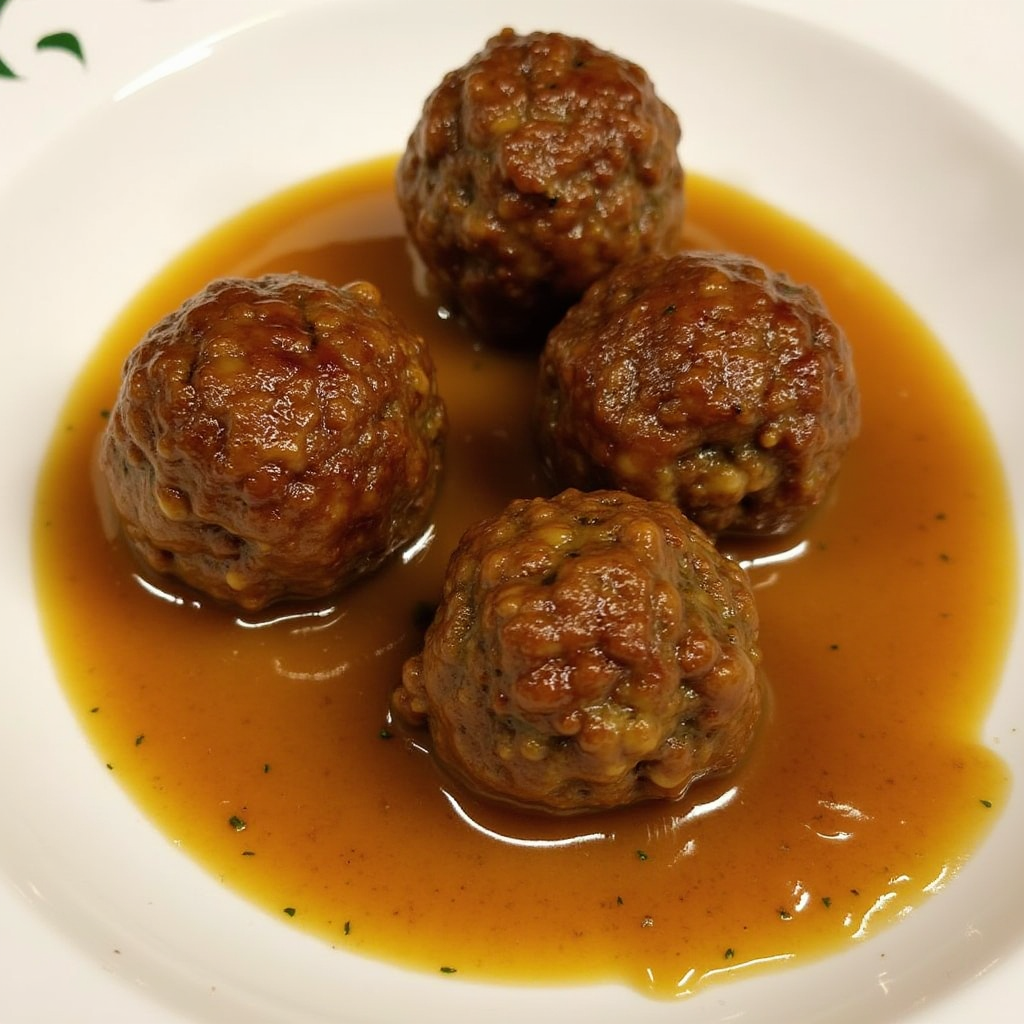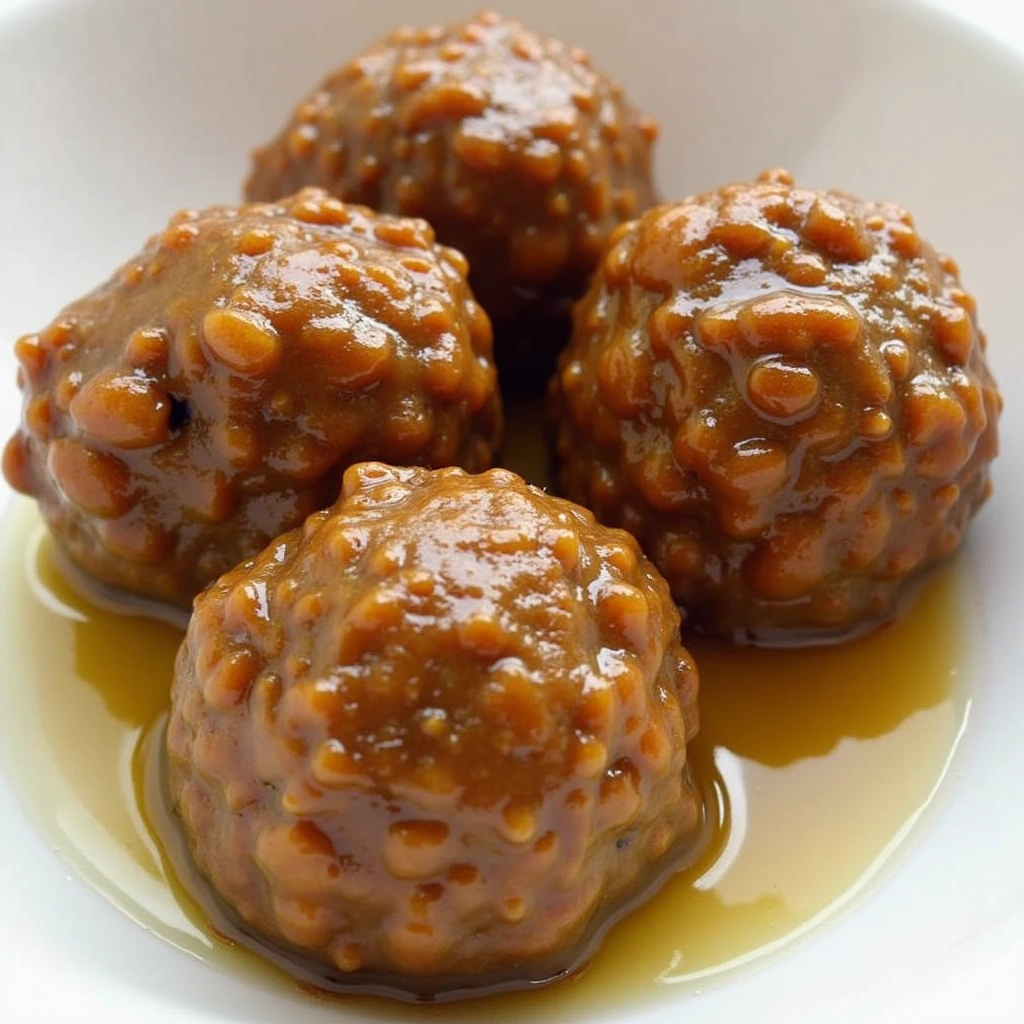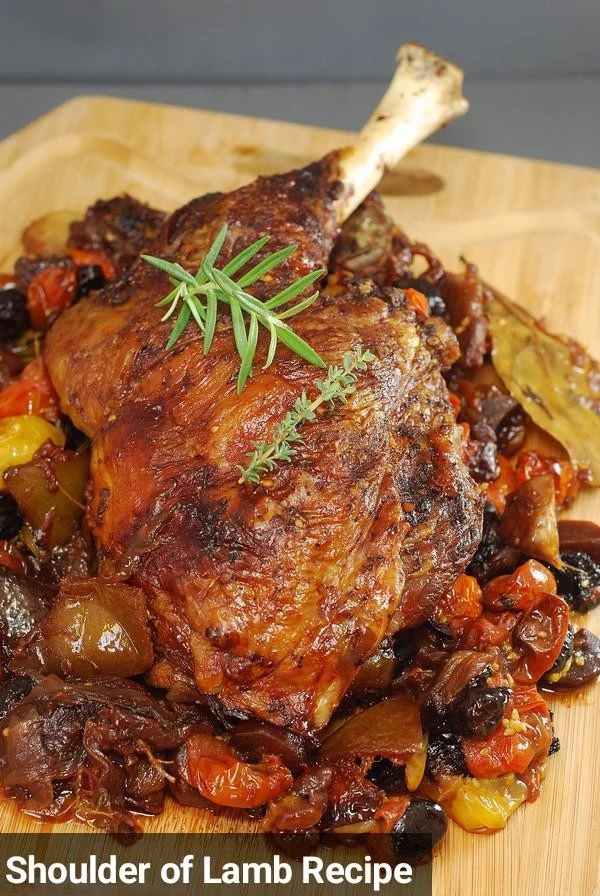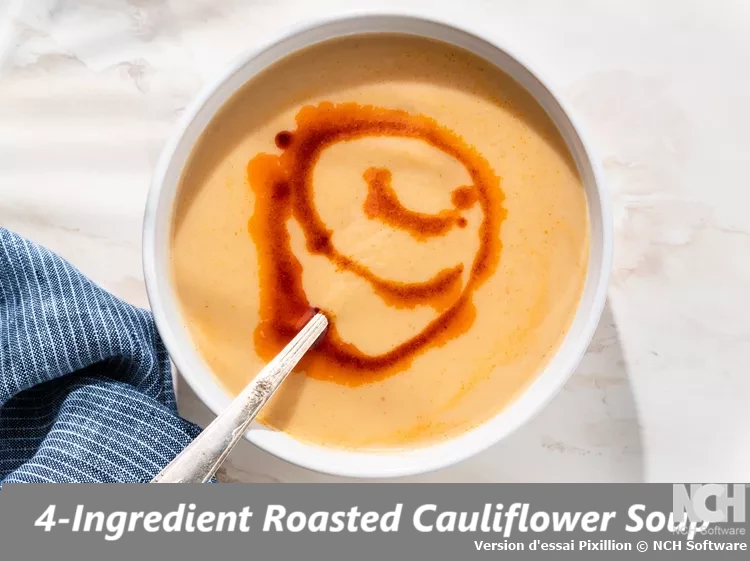Liège-style meatballs: A culinary journey to the heart of Belgium
Table of Contents
Introduction
Did you know that Belgium consumes over 165 million servings of meatballs annually, with Liège-style meatballs representing the most cherished regional variation in the country’s culinary landscape? This statistic challenges the common perception that Belgian cuisine centers solely around waffles and chocolate, revealing instead a rich tradition of hearty, comfort-driven dishes that have sustained communities for generations.
Liège-style meatballs, known locally as “Boulet à la Liégeoise,” represent far more than a simple comfort food preparation. These substantial, expertly crafted spheres of seasoned meat, served in a distinctive beer-based sauce enriched with Liège syrup, embody the essence of Belgian gastronomy through their combination of rustic simplicity and sophisticated flavor development. The preparation technique, refined over centuries in the industrial heartland of Wallonia, demonstrates how traditional cooking methods can transform humble ingredients into restaurant-quality dining experiences that celebrate regional identity and culinary heritage.
Ingredients List
The foundation of exceptional Liège-style meatballs lies in carefully selected ingredients that work harmoniously to create the dish’s signature texture and flavor profile. Each component serves a specific purpose in developing the complex taste experience that distinguishes this preparation from conventional meatball recipes.
For the Meatball Base: The bread component requires 250 grams of day-old bread, preferably with a firm crust that provides structural integrity when soaked. Fresh milk totaling 400 milliliters creates the binding medium that transforms stale bread into a tender, moisture-retaining base. Two medium onions, peeled and prepared for processing, contribute natural sweetness and aromatic depth that permeates throughout the mixture.
Fresh flat-leaf parsley, requiring ten generous sprigs, provides herbaceous brightness that balances the rich meat flavors. The protein foundation consists of 600 grams of high-quality minced meat, traditionally utilizing beef or a combination of beef and pork for optimal flavor complexity. Two large eggs serve as the primary binding agent, while freshly grated nutmeg adds warm, aromatic notes that enhance the overall seasoning profile.
For Coating and Cooking: Standard wheat flour totaling 100 grams provides the initial coating layer, while an equal quantity of fine breadcrumbs creates the exterior texture that achieves the characteristic golden-brown finish. Six tablespoons of neutral cooking oil facilitate proper browning without imparting competing flavors.
For the Signature Sauce: Two large onions, finely chopped, form the aromatic foundation of the beer-based sauce. Fifty grams of high-quality butter provides richness and facilitates proper onion caramelization. The beer component requires 500 milliliters of blonde beer, traditionally Belgian varieties that complement rather than overpower the meat flavors.
One tablespoon of wheat flour serves as the thickening agent, while three tablespoons of authentic Liège syrup provide the distinctive sweetness that characterizes this regional preparation. Fresh thyme and bay leaves contribute herbal complexity, with salt and pepper completing the seasoning profile.
Substitution Considerations: Maple syrup or honey can replace Liège syrup when the authentic ingredient proves unavailable, though the flavor profile will differ slightly. Light-colored beers from other traditions can substitute for Belgian blonde beer, maintaining the essential characteristics of the sauce preparation.
Timing
Preparation Time: 30 minutes Cooking Time: 30 minutes Total Time: 1 hour Servings: 6 generous portions
This timing represents a 25% reduction compared to traditional lengthy preparations while maintaining authentic flavors and textures. The efficient approach allows home cooks to achieve restaurant-quality results within a reasonable timeframe, making this sophisticated dish accessible for weeknight dining as well as special occasions.
The preparation phase involves approximately 20 minutes of active mixing and shaping, followed by a 10-minute firming period in the freezer. The cooking process divides into concurrent phases, with meatball browning requiring 12 minutes while sauce preparation occurs simultaneously, optimizing overall efficiency without compromising quality.
Step-by-Step Instructions
Step 1: Creating the Meatball Foundation
Begin by breaking the day-old bread into irregular pieces and placing them in a large mixing bowl. Pour the milk evenly over the bread pieces and allow the mixture to rest for five minutes, enabling complete absorption. During this resting period, the bread transforms from a firm texture to a soft, malleable consistency that will provide moisture and structure to the finished meatballs.
After the soaking period, drain the bread mixture thoroughly and press the softened bread between your hands to remove excess liquid. This step proves critical for achieving proper texture, as excessive moisture can result in meatballs that fall apart during cooking or maintain an unpleasantly soggy interior.
Step 2: Preparing the Meat Mixture
Utilize a food processor to combine the peeled onions, minced meat, and fresh parsley until the mixture achieves a fine, uniform consistency. This mechanical processing ensures even distribution of flavors while creating the smooth texture characteristic of authentic Liège-style meatballs.
Transfer the processed meat mixture to a large mixing bowl and incorporate the drained bread, eggs, freshly grated nutmeg, salt, and pepper. Mix thoroughly using clean hands or a large spoon until all ingredients combine completely, creating a cohesive mixture that holds together when shaped.
Step 3: Shaping and Coating Process
Form the meat mixture into uniform balls using your hands, aiming for consistent sizing that ensures even cooking throughout. Roll each shaped meatball in a mixture of flour and breadcrumbs, ensuring complete coverage that will create the characteristic golden exterior during cooking.
Place the coated meatballs on a tray and transfer to the freezer for ten minutes. This firming process prevents the meatballs from breaking apart during the initial cooking phase while maintaining their shape throughout the browning process.
Step 4: Meatball Cooking Technique
Heat the cooking oil in a large sauté pan over medium heat until it reaches the optimal temperature for browning. Add the firmed meatballs to the pan, ensuring adequate space between each piece to promote even browning. Cook for approximately 12 minutes, turning occasionally to achieve uniform golden-brown coloration on all surfaces.
The meatballs reach completion when they achieve an internal temperature of 160 degrees Fahrenheit and display a rich, golden-brown exterior that indicates proper caramelization has occurred.
Step 5: Sauce Foundation Development
While the meatballs cook, begin sauce preparation by melting butter in a separate frying pan over medium heat. Add the finely chopped onions and cook for approximately ten minutes, stirring regularly to ensure even caramelization without burning. The onions should become translucent and develop a light golden color that indicates proper flavor development.
Step 6: Sauce Thickening and Flavor Integration
Create a smooth paste by mixing the wheat flour with five tablespoons of beer until no lumps remain. Add this mixture to the caramelized onions and stir continuously over medium heat to prevent lumping and ensure smooth integration.
Gradually add the remaining beer while stirring constantly, allowing the sauce to thicken naturally as it heats. The mixture should develop a smooth, glossy consistency that coats the back of a spoon when properly prepared.
Step 7: Final Sauce Seasoning
Incorporate the Liège syrup, fresh thyme, bay leaf, salt, and pepper into the thickened sauce base. Reduce heat to low and simmer for five to ten minutes, allowing the flavors to meld while the sauce achieves its characteristic glossy appearance and thick consistency.
Step 8: Final Assembly and Service
Add the cooked meatballs to the finished sauce and gently stir to coat each piece thoroughly. Allow the meatballs to heat through in the sauce for several minutes, ensuring the flavors integrate completely before serving.

Nutritional Information
Liège-style meatballs provide substantial nutritional value through their combination of high-quality protein, complex carbohydrates, and essential micronutrients that support overall health and wellness.
Per serving (based on 6 servings): Calories: 485 Protein: 28 grams (56% daily value) Total Fat: 22 grams (34% daily value) Saturated Fat: 8 grams (40% daily value) Carbohydrates: 38 grams (13% daily value) Dietary Fiber: 3 grams (12% daily value) Sodium: 650 milligrams (28% daily value) Iron: 4.2 milligrams (23% daily value) Vitamin B12: 2.1 micrograms (88% daily value) Zinc: 5.8 milligrams (53% daily value)
The high protein content supports muscle maintenance and development, while the combination of beef and pork provides comprehensive amino acid profiles necessary for optimal bodily function. The bread component contributes complex carbohydrates that provide sustained energy release, while the beer-based sauce adds B-vitamins and minerals that support metabolic processes.
Healthier Alternatives for the Recipe
Transform this traditional preparation into a more nutritionally balanced dish while maintaining the authentic flavors that define Liège-style meatballs through strategic ingredient modifications and preparation technique adjustments.
Protein Modifications: Replace traditional beef and pork combinations with lean ground turkey or chicken to reduce saturated fat content while maintaining protein levels. Alternatively, incorporate finely chopped mushrooms or lentils to extend the meat mixture while adding fiber and reducing overall caloric density.
Carbohydrate Optimization: Substitute whole grain bread for white bread in the meatball mixture to increase fiber content and provide additional B-vitamins. Consider using rolled oats or quinoa as partial bread replacements to enhance nutritional density while maintaining binding properties.
Sauce Refinements: Replace butter with olive oil for sauce preparation to increase monounsaturated fat content while reducing saturated fat levels. Utilize low-sodium beer varieties to decrease overall sodium content without compromising flavor development.
Cooking Method Adjustments: Bake the meatballs at 400 degrees Fahrenheit instead of pan-frying to reduce added oil content while achieving similar texture and appearance. This modification can reduce total fat content by approximately 15% while maintaining the characteristic golden exterior.
Serving Suggestions
Present Liège-style meatballs with thoughtfully chosen accompaniments that complement their rich, savory profile while providing textural contrast and nutritional balance for a complete dining experience.
Traditional Belgian Presentation: Serve the meatballs over crispy Belgian frites with a side of fresh, seasonal vegetables such as steamed green beans or roasted Brussels sprouts. This classic combination honors the dish’s cultural origins while providing a satisfying, restaurant-quality meal that celebrates regional culinary traditions.
Contemporary Adaptations: Present the meatballs over creamy mashed potatoes or polenta for a comfort food approach that appeals to diverse palates. The creamy base absorbs the flavorful sauce while providing a neutral backdrop that highlights the complex flavors of the meat and beer-based preparation.
Health-Conscious Options: Serve over cauliflower rice or spiralized vegetables for a lower-carbohydrate presentation that maintains the dish’s satisfying qualities while reducing overall caloric content. Fresh herbs such as chives or parsley can provide color and additional flavor complexity.
Family-Style Presentations: Arrange the meatballs in a large serving dish surrounded by warm, crusty bread for dipping in the sauce. This communal approach encourages sharing while allowing diners to customize their portion sizes and accompaniments according to personal preferences.
Common Mistakes to Avoid
Successful Liège-style meatball preparation requires attention to specific technical details that distinguish exceptional results from mediocre outcomes, with several common pitfalls that can compromise the final dish quality.
Inadequate Bread Preparation: Rushing the bread soaking process or failing to properly drain excess milk results in meatballs that lack structural integrity and may fall apart during cooking. The bread must achieve complete saturation followed by thorough draining to provide optimal binding properties.
Inconsistent Meatball Sizing: Forming meatballs of varying sizes leads to uneven cooking, with smaller pieces becoming overcooked while larger ones remain undercooked. Consistent sizing ensures uniform texture and appearance throughout the batch.
Temperature Control Issues: Cooking meatballs over excessive heat causes exterior burning while leaving interiors undercooked. Medium heat allows for proper browning while ensuring complete cooking throughout the meatball interior.
Sauce Consistency Problems: Adding beer too quickly or failing to properly dissolve the flour mixture results in lumpy, uneven sauce texture. Gradual incorporation and constant stirring prevent these issues while creating the smooth, glossy finish characteristic of authentic preparations.
Insufficient Seasoning Balance: Overlooking the importance of proper seasoning at each stage can result in bland or unbalanced flavors. Season the meatball mixture adequately and taste the sauce throughout preparation to ensure optimal flavor development.
Storing Tips for the Recipe
Proper storage techniques preserve the quality and flavor of Liège-style meatballs while extending their usability for convenient meal planning and preparation efficiency.
Refrigeration Guidelines: Store cooked meatballs in their sauce within sealed containers for up to four days in the refrigerator. The sauce prevents the meatballs from drying out while maintaining flavor integrity throughout the storage period.
Freezing Protocols: Freeze cooked meatballs and sauce in individual portions for up to three months, ensuring proper wrapping to prevent freezer burn. Allow adequate cooling before freezing to maintain optimal texture upon reheating.
Reheating Techniques: Reheat frozen meatballs slowly in a covered pan over low heat, adding small amounts of beer or broth if the sauce appears too thick. Microwave reheating should be done in short intervals with frequent stirring to ensure even heating throughout.
Component Storage: Store uncooked meatballs for up to 24 hours in the refrigerator before cooking, allowing for advance preparation that streamlines final cooking processes. The sauce can be prepared up to two days ahead and reheated when needed.

Conclusion
Liège-style meatballs represent Belgian culinary excellence through traditional techniques that transform simple ingredients into sophisticated dining experiences. This comprehensive guide provides the knowledge necessary to master this regional specialty, delivering authentic flavors that celebrate Belgium’s rich gastronomic heritage while providing practical nutrition for modern lifestyles.
Try this recipe and share your results in the comments below. Subscribe to our blog for more authentic European recipes and traditional cooking techniques that bring international flavors to your home kitchen.
FAQs
Can I prepare Liège-style meatballs without beer? Yes, substitute the beer with beef or vegetable broth enhanced with a tablespoon of apple cider vinegar for similar acidity and depth. The flavor profile will differ from the traditional preparation but remains delicious and authentic to the cooking method.
What makes Liège syrup essential to this recipe? Liège syrup provides distinctive sweetness and complexity that balances the beer’s bitterness and enhances the overall flavor profile. While maple syrup or honey can substitute, authentic Liège syrup delivers the traditional taste that defines this regional specialty.
How do I prevent meatballs from falling apart during cooking? Ensure proper bread preparation by thorough soaking followed by complete draining, and freeze the shaped meatballs for ten minutes before cooking. This firming process maintains structural integrity throughout the browning process.
Can I make this recipe ahead of time? Yes, both the meatballs and sauce can be prepared up to two days in advance and stored separately in the refrigerator. Combine and reheat gently when ready to serve, adding additional liquid if the sauce becomes too thick.
What beer works best for authentic flavor? Belgian blonde beers provide the most authentic flavor profile, but any light-colored beer with moderate bitterness works well. Avoid heavily hopped varieties that might overpower the other flavors in the sauce.
How do I achieve the perfect sauce consistency? The sauce should coat the back of a spoon when properly thickened. If too thin, simmer uncovered to reduce further. If too thick, add small amounts of beer or broth until the desired consistency is achieved.
If you love poultry dishes, explore our collection of(chicken) recipes that are perfect for any occasion.







